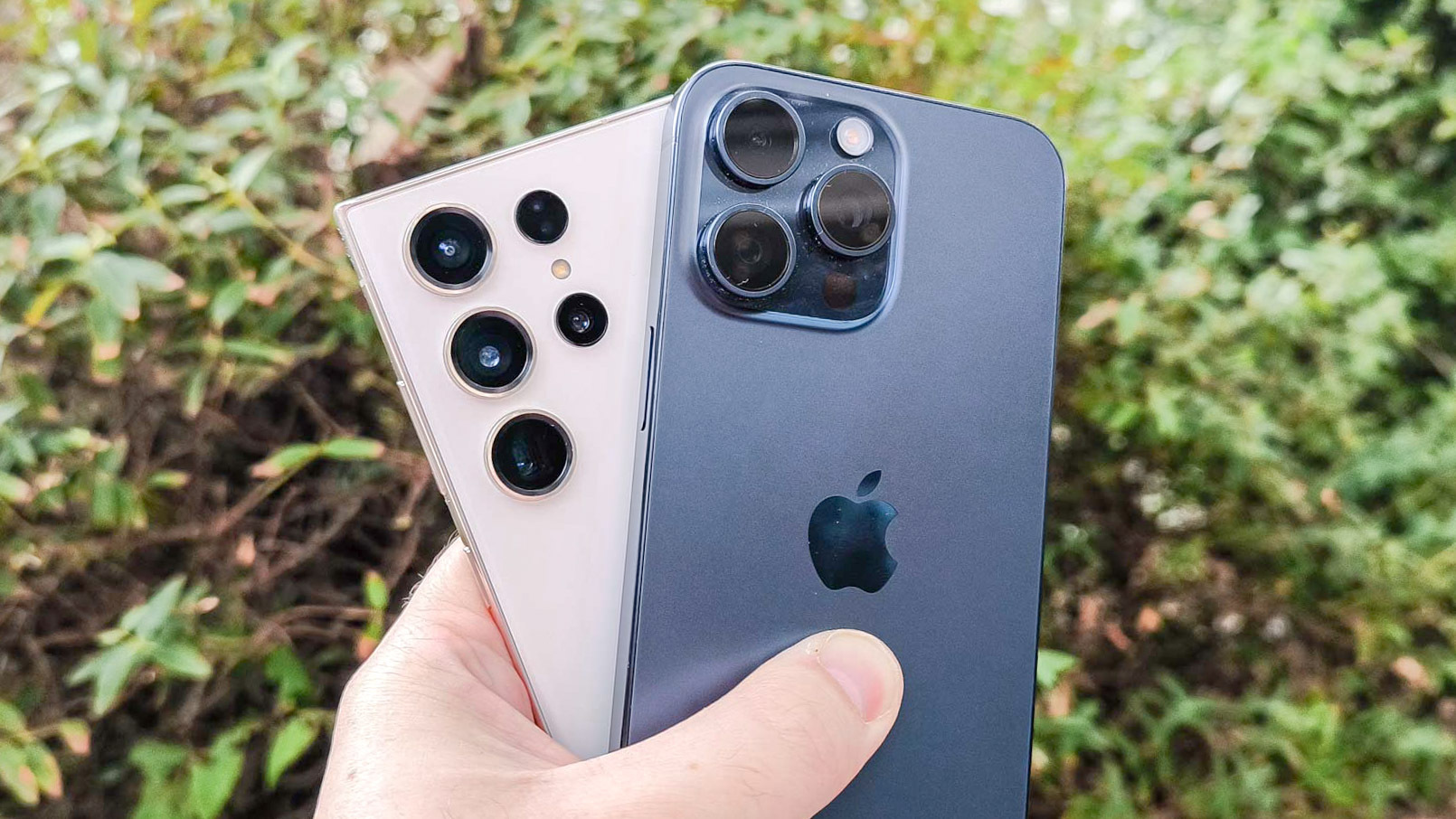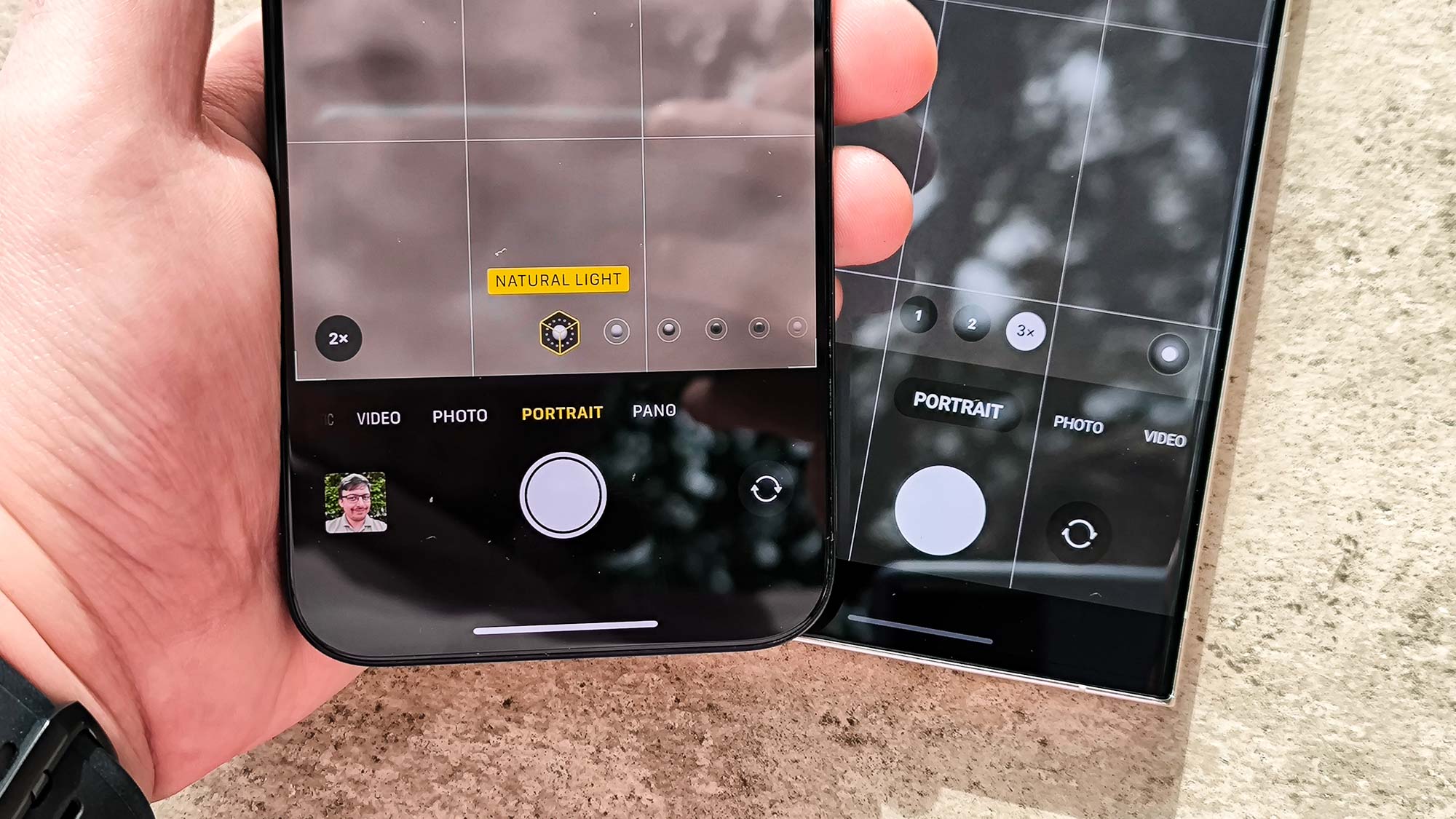Portrait shoot-out: iPhone 15 Pro Max vs Samsung Galaxy S23 Ultra
Two flagships go head to head, literally

The iPhone 15 Pro Max and Samsung Galaxy S23 Ultra are incredibly powerful, capable phones that can rival real cameras for snapshots. But sometimes you just want to feel like a professional photographer and add a fancy-looking blur on your photos, and that's something both phones can still help you with thanks to their portrait photo modes.
Apple's newest and best-equipped iPhone has the benefit of depth sensors front and back to help with portrait-mode images, while the S23 Ultra only offers one on the back. However, the Ultra also offers a far higher-resolution 200MP main camera sensor, but by default pixel-bins its images down to 12MP, which is actually smaller and lower-res than the new iPhone's 24MP default.
These factors plus the two companies' different approaches to photo processing, mean there are a lot of potential variables that could affect the final quality of their portrait tests. But rather than talk about the theory, we took both phones out and shot some portrait mode photos in a variety of situations. Check them out below, and see if you agree with our findings about which phone comes out on top.
John
We start with TG Phones editor John in front of a fountain. At first glance, the iPhone shot is a bit more saturated, with the Galaxy S23 Ultra cranking up the brightness in comparison. However, as a result the Samsung overdoes the highlights, blowing out the brighter areas of John's face. But the blur and depth effect of the shot is much stronger, making for an overall appealing shot.
The iPhone has produced a more balanced image, for better and for worse. Its colors and depth/bokeh are flatter, but it means John doesn't look weirdly shiny, and you can still make out fun details like the water cascading down the fountain in the background. John almost looks photoshopped on the scene in the Samsung pic, though you can always dial down the bokeh effect.
Mark
As we saw with John, the Samsung image brightens up the subject of this portrait shot, in this case our global editor-in-chief Mark Spoonauer. But because of the different lighting conditions, this actually plays to the Galaxy S23 Ultra's advantage.
The less extreme light adjustment from the iPhone means that the shaded left side of Mark's face is considerably darker than the right. It's still obvious the light's coming from Mark's right in the Samsung shot but the contrast is less dramatic.
Get instant access to breaking news, the hottest reviews, great deals and helpful tips.
We can again see the stronger default bokeh effect of the Samsung and the more balanced coloration of the iPhone, including a more accurate-looking skin tone.
For this next shot of Mark we used the 2x option on the iPhone 15 Pro Max and the 3x option on the Galaxy S23 Ultra to get in closer. And in this case the iPhone wins with more detail in his shirt and hair and less shadow covering his face on the right side of the frame. The blue in the shirt is more realistic as well.
Richard (front camera)
Now we move to the front camera, and some selfies of me in front of a leafy background. Through the front camera, the iPhone offers the most saturated shot of the two, with both my skin and my shirt looking pinker. That's the reverse of what we saw with the rear camera shots.
The Galaxy's image is less saturated and more balanced, which helps bring out the darker areas of the images, such as around my eyes. It's still brighter though, which also helps in this regard.
I wrote a whole story earlier this year praising how well the Galaxy S23 Ultra's portrait mode worked even when wearing glasses, something that the iPhone 14 Pro Max didn't manage quite as well. Luckily for me, the cutout around my glasses is very good on both the Galaxy S23 Ultra and the iPhone 15 Pro Max. The iPhone is even smart enough to apply bokeh to the small portion of the background visible through the lens, rather than leaving it prominently unblurred like the Samsung does.
Richard (selfie, Night mode)
I also tried out a selfie at night, a more fiendish test of these phones' portrait abilities since there's less light for the cameras to work with.
The Galaxy S23 Ultra version of this shot is sharper overall with more contrast, but yet again blows out the highlights, making my forehead and nose look unfortunately shiny. The high contrast is back again too, making the shadows on my face and shirt a lot more dramatic-looking.
The iPhone 15 Pro Max portrait is more even and pleasing overall. My hair is sharper and the bokeh effect is stronger. However, the iPhone failed to catch the end of my glasses properly though, something the Galaxy S23 Ultra didn't struggle with.
Verdict

What these camera samples show is that the iPhone 15 Pro will reliably produce a decent-quality portrait shot from either the rear or front cameras, whatever the situation you use the phone in. While the Galaxy S23 Ultra's not far behind, its photo processing is more extreme, meaning it does well in situations with more awkward lighting but can make more typically-lit shots look unnatural.
It’s also worth pointing out that you can actually dial down the camera’s aperture on both phones, which could either lessen or amplify the bokeh effect to the background — so you can get that perfect portrait shot that’s to your liking.
Portrait shots are only one part of the iPhone 15 Pro Max's camera capabilities. Have a look at our iPhone 15 camera test for a more general examination of the new phones' photos, or if you want more comparisons to the Galaxy S23 Ultra, we have a zoom camera shootout alongside the Google Pixel 7 Pro.

Richard is based in London, covering news, reviews and how-tos for phones, tablets, gaming, and whatever else people need advice on. Following on from his MA in Magazine Journalism at the University of Sheffield, he's also written for WIRED U.K., The Register and Creative Bloq. When not at work, he's likely thinking about how to brew the perfect cup of specialty coffee.
